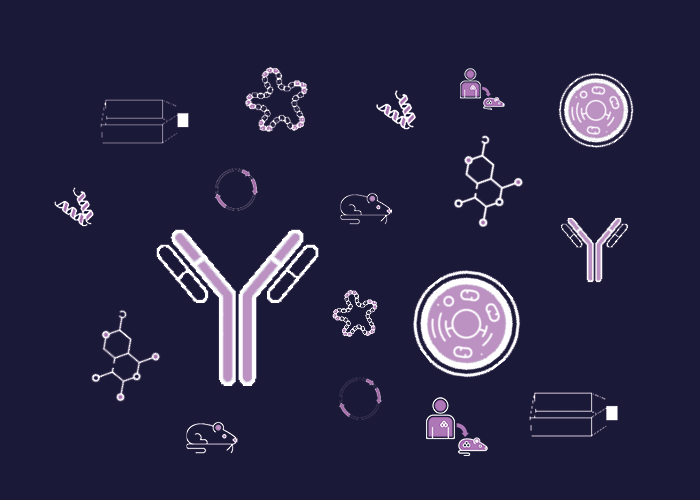
Cat. #153224
Anti-CD21 [BU79]
Cat. #: 153224
Unit size: 100 ug
Availability: 3-4 weeks
Target: CD21
Class: Monoclonal
Application: IHC
Reactivity: Human
Host: Mouse
£300.00
This fee is applicable only for non-profit organisations. If you are a for-profit organisation or a researcher working on commercially-sponsored academic research, you will need to contact our licensing team for a commercial use license.
Contributor
Inventor: Margaret Goodall
Institute: University of Birmingham
Tool Details
*FOR RESEARCH USE ONLY (for other uses, please contact the licensing team)
- Name: Anti-CD21 [BU79]
- Alternate name: Complement receptor type 2; CR2; complement C3d receptor, C3DR, Epstein-Barr virus receptor
- Research fields: Immunology
- Clone: BU80
- Class: Monoclonal
- Conjugation: Unconjugated
- Strain: Balb/c
- Reactivity: Human
- Host: Mouse
- Application: IHC
- Description: Cluster of differentiation 21 (CD21) is a protein encoded by the CR2 gene in humans. It is involved in the complement system and binds to iC3b (an inactive derivative of C3b). B cells are known to have CR2 receptors on their surfaces allowing the complement system to act in B-cell maturation and activation. Genetic variations are associated with susceptibility to systemic lupus erythematosus type 9 (SLEB9) which is a chronic autoimmune disease with an inflammatory, and often febrile multisystemic disorder of connective tissue characterized principally by involvement of the skin, joints, kidneys, and serosal membranes.
- Immunogen: Daudi cell line (B lymphoblast)
- Isotype: IgG1
Target Details
- Target: CD21
- Target background: Cluster of differentiation 21 (CD21) is a protein encoded by the CR2 gene in humans. It is involved in the complement system and binds to iC3b (an inactive derivative of C3b). B cells are known to have CR2 receptors on their surfaces allowing the complement system to act in B-cell maturation and activation. Genetic variations are associated with susceptibility to systemic lupus erythematosus type 9 (SLEB9) which is a chronic autoimmune disease with an inflammatory, and often febrile multisystemic disorder of connective tissue characterized principally by involvement of the skin, joints, kidneys, and serosal membranes.
Applications
- Application: IHC
Handling
- Format: Liquid
- Concentration: 0.9-1.1mg/ml
- Unit size: 100 ug
- Storage buffer: PBS with 0.02% azide
- Storage conditions: -15° C to -25° C
- Shipping conditions: Dry ice
References
- Leucocyte Typing VI, (1998): edited by T. Kishimoto, Garland Publishing, New York.
- Ling et al. 1998. Clin Exp Immunol. 113(3):360-6. PMID: 9737663.
- Ling et al. 1998. Clin Exp Immunol. 113(3):360-6. PMID: 9737663.
- Buescher et al. 1991. Public Health Rep. 106(3):333-8. PMID: 1905057.




